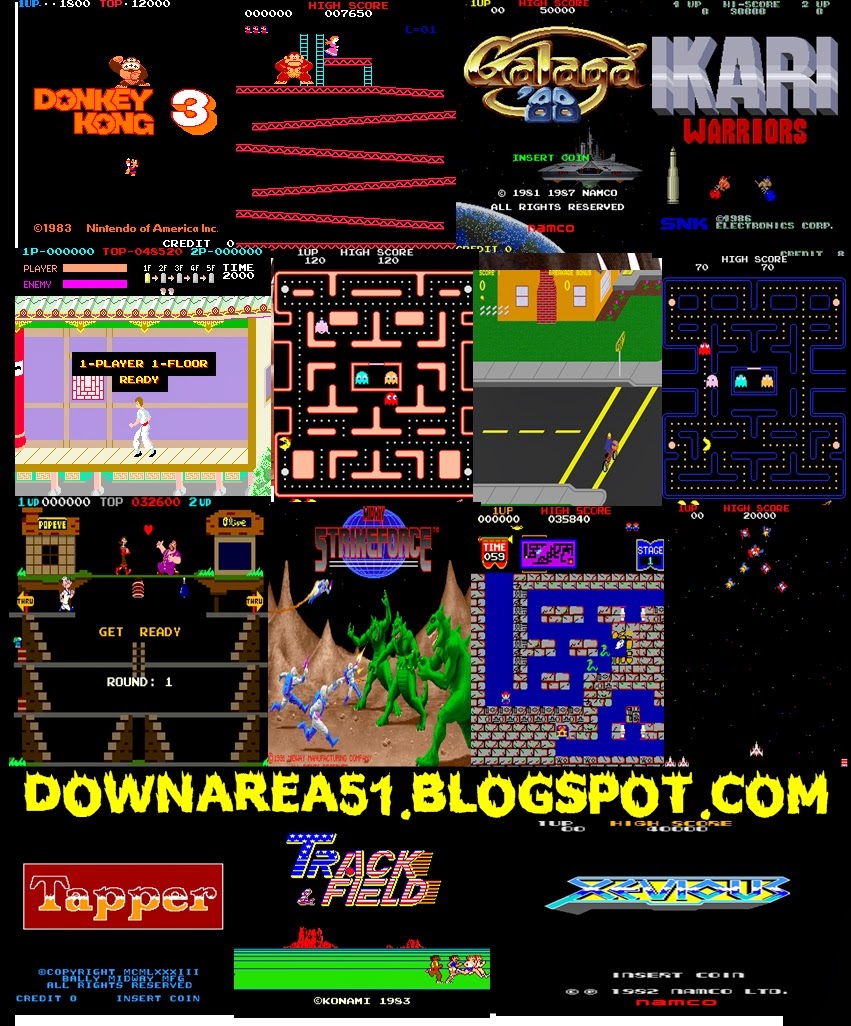Breaking News
Mame Roms Pack Zip
вторник 09 октября admin 41
What is a ROM image? For arcade games, a ROM image or file is a copy of all of the data inside a given chip on the arcade motherboard. For most consoles and handhelds, the individual chips are frequently (but not always) merged into a single file. As arcade machines are much more complicated in their design, you’ll typically need the data from a number of different chips on the board. Grouping all of the files from Puckman together will get you a ROM set of Puckman. An example ROM image would be the file pm1_prg1.6e stored in the Puckman ROM set.
Top 100 MameROMs @ Dope Roms. J.League Pro Soccer Club wo Tsukurou! Advance (J).zip. A merged set contains all the files, parent and clone, inside a single.zip file, and is the most space efficient, although it means a full update with each new version. MAME (an acronym of Multiple Arcade Machine Emulator) is a free and open source emulator designed to recreate the hardware of arcade game systems in software on modern personal.
Parents, Clones, Splitting, and Merging As the MAME developers received their third or fourth revision of Pac-Man, with bugfixes and other code changes, they quickly discovered that nearly all of the board and chips were identical to the previously dumped version. In order to save space, MAME was adjusted to use a parent/clone set system. A given set, usually (but not necessarily) the most recent bugfixed World revision of a game, will be designated as the parent. All sets that use mostly the same chips (e.g.
Japanese Puckman and USA/World Pac-Man) will be clones that contain only the changed data compared to the parent set. This typically comes up as an error message to the user when trying to run a Clone set without having the Parent set handy. Using the above example, trying to play the USA version of Pac-Man without having the PUCKMAN.ZIP parent set will result in an error message that there are missing files. Now we add the final pieces of the puzzle: non-merged, split, and merged sets. MAME is extremely versatile about where ROM data is located and is quite intelligent about looking for what it needs. This allows us to do some magic with how we store these ROM sets to save further space. A non-merged set is one that contains absolutely everything necessary for a given game to run in one ZIP file.
This is ordinarily very space-inefficient, but is a good way to go if you want to have very few sets and want everything self-contained and easy to work with. We do not recommend this for most users.
* Classic ASP and SQL Server users should use the.msi installs. Download the Chilkat ActiveX All of the Chilkat ActiveX objects are contained within a single DLL. Chilkat software keygens serials.
A split set is one where the parent set contains all of the normal data it should, and the clone sets contain only what has changed as compared to the parent set. This saves some space, but isn’t quite as efficient as A merged set takes the parent set and one or more clone sets and puts them all inside the parent set’s storage.
For instance, if we combine the Puckman sets, Midway Pac-Man (USA) sets, and various other related official and bootleg sets all into PUCKMAN.ZIP, the result would be a merged set. A complete merged set with the parent and all clones uses less disk space than a split set. With those basic principles, there are two other kinds of set that will come up in MAME use from time to time. First, the BIOS set: Some arcade machines shared a common hardware platform, such as the Neo-Geo arcade hardware. As the main board had data necessary to start up and self-test the hardware before passing it off to the game cartridge, it’s not really appropriate to store that data as part of the game ROM sets. Instead, it is stored as a BIOS image for the system itself (e.g.

NEOGEO.ZIP for Neo-Geo games) Secondly, the device set. Frequently the arcade manufacturers would reuse pieces of their designs multiple times in order to save on costs and time. Programma dlya risovaniya stellazhej. Some of these smaller circuits would reappear in later boards that had minimal common ground with the previous boards that used the circuit, so you couldn’t just have them share the circuit/ROM data through a normal parent/clone relationship. Instead, these re-used designs and ROM data are categorized as a Device, with the data stored as a Device set. For instance, Namco used the Namco 51xx custom I/O chip to handle the joystick and DIP switches for Galaga and other games, and as such you’ll also need the NAMCO51.ZIP device set as well as any needed for the game.
Troubleshooting your ROM sets and the history of ROMs A lot of the frustration users feel towards MAME can be directly tied to what may feel like pointless ROM changes that seem to only serve to make life more difficult for end-users. Understanding the source of these changes and why they are necessary will help you to avoid being blindsided by change and to know what you need to do to keep your sets running. A large chunk of arcade ROMs and sets existed before emulation did.
